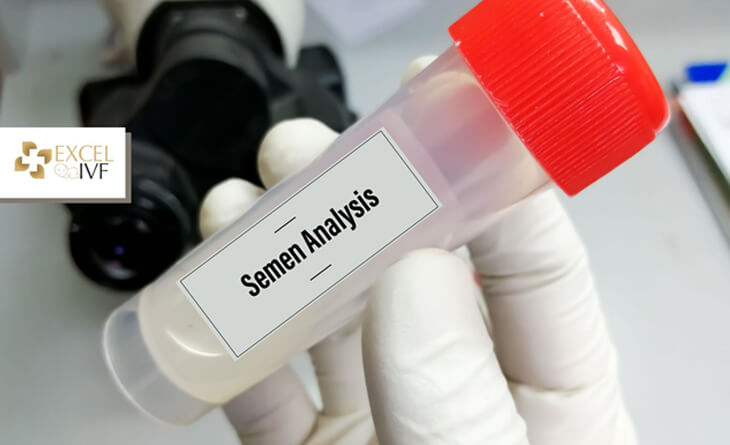Azoospermia, retrograde ejaculation, and anejaculation are three distinct male reproductive disorders that can impact fertility and sexual function. Azoospermia is characterized by the absence of sperm in the ejaculate, which can be caused by blockages or issues with sperm production. Retrograde ejaculation occurs when semen enters the bladder instead of being expelled through the penis, often due to underlying medical conditions or surgery. Anejaculation, the inability to ejaculate despite sexual arousal, can result from neurological or psychological factors. Understanding these conditions is crucial for diagnosis and effective treatment, offering hope to those facing challenges with fertility and sexual health.

In this article, I will briefly summarize the differences, definitions, causes, symptoms, diagnostic methods and treatment options between azoospermia, retrograde ejaculation and anejaculation.
Definitions
- Azoospermia: The complete absence of sperm in the ejaculate. This condition can be classified into obstructive and non-obstructive types, depending on whether there is a blockage in the reproductive tract or a problem with sperm production.
- Retrograde Ejaculation: A condition where semen is redirected into the bladder instead of being expelled through the penis during ejaculation. This results in a dry orgasm or the presence of semen in the urine.
- Anejaculation: The inability to ejaculate despite sexual arousal. This condition is characterized by the lack of semen release during orgasm, though the individual may experience normal sexual desire and arousal.
Causes
- Azoospermia:
- Obstructive: Blockages in the reproductive tract (e.g., due to infections, surgeries, or congenital abnormalities).
- Non-Obstructive: Issues with sperm production in the testicles (e.g., genetic disorders, hormonal imbalances, or testicular damage).
- Retrograde Ejaculation:
- Medical Conditions: Diabetes, spinal cord injuries, or neurological disorders affecting the nerves responsible for ejaculation.
- Medications: Certain drugs, such as those used to treat high blood pressure or prostate conditions, can interfere with normal ejaculation.
- Surgery: Procedures on the prostate or bladder that may affect the ejaculatory pathway.
- Anejaculation:
- Neurological Causes: Damage to or diseases of the nervous system affecting the ejaculatory reflex.
- Psychological Factors: Anxiety, stress, or emotional issues.
- Medications: Side effects of certain medications or drugs.
Symptoms
- Azoospermia:
- No sperm in ejaculate.
- Infertility or difficulty achieving pregnancy.
- Retrograde Ejaculation:
- Dry orgasm or reduced semen volume.
- Semen present in urine after ejaculation.
- Anejaculation:
- Absence of ejaculation despite sexual arousal.
- Normal sexual desire and ability to achieve an erection, but no release of semen.
Diagnostic methods
- Azoospermia:
- Semen analysis to confirm the absence of sperm.
- Hormonal tests to assess testosterone and other relevant hormones.
- Genetic testing if a hereditary condition is suspected.
- Imaging studies (e.g., ultrasound) to identify blockages.
- Retrograde Ejaculation:
- Semen analysis to check for the presence of sperm in the urine.
- Post-ejaculatory urinalysis to identify semen in the bladder.
- Neurological and urological evaluations to determine underlying causes.
- Anejaculation:
- Comprehensive sexual history and physical examination.
- Neurological evaluation to rule out nerve damage.
- Psychological assessment to identify potential emotional or psychological factors.
Treatment options
- Azoospermia:
- Obstructive: Surgical intervention to correct blockages or retrieve sperm.
- Non-Obstructive: Hormonal treatments, lifestyle changes, or assisted reproductive techniques like sperm retrieval for in vitro fertilization (IVF).
- Retrograde Ejaculation:
- Medications to improve bladder function or increase the contraction of the bladder neck.
- Alpha-adrenergic agents to help close the bladder neck.
- Intrauterine insemination (IUI) using sperm collected from the bladder.
- Anejaculation:
- Neurological Causes: Treatment of underlying neurological disorders.
- Psychological Factors: Counseling or therapy to address emotional or psychological issues.
- Medications: Adjusting or changing medications that may be contributing to the condition.
Each condition has distinct implications for fertility and sexual health, and accurate diagnosis is essential for determining the most effective treatment approach.
Summary
Azoospermia, retrograde ejaculation, and anejaculation are male reproductive disorders with different characteristics and causes. Azoospermia is the absence of sperm in ejaculate, which can result from blockages or sperm production issues. Retrograde ejaculation occurs when semen is redirected into the bladder, leading to dry orgasms or semen in urine, often due to medical conditions, medications, or surgeries. Anejaculation is the inability to ejaculate despite sexual arousal, caused by neurological or psychological factors. Accurate diagnosis and treatment are crucial for managing these conditions and addressing fertility or sexual health concerns.
Prof.Dr Emin ÖZBEK
Urologist
Istanbul- TURKIYE



Leave a Reply